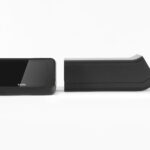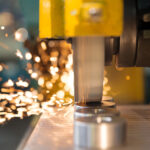Metals have an extensive amount of physical properties, such as being good conductors, high melting points, high density, good malleability and good ductility, which gives a strong importance in a vast amount of applications.
More than 90% of the materials of various mechanical products are manufactured in metal materials. For example, steel is considered the basic structural material and backbone of industry.
If these metal materials are not subjected to strict quality inspection, these could be improperly selected and/or used, which will cause premature failure of the material, and even more, will lead to major safety incidents.
GrindoSonic is an established system that operates in three clear axes:
material characterization, material evolution and quality control for research & development and industrial applications. Together with a portfolio of devices, state of the art metrology is applied to ensure a robust, high-speed, accurate and precise determination of the mechanical properties under study.
Material Characterization
Material characterization by the Impulse Excitation Technique (IET) is a well known technology (described in the ASTME1876 standard) that, by tapping a material, it allows to determine the Young’s Modulus, Shear Modulus and Poisson’s Ratio. Furthermore, analyzing the width at half height of a resonance peak, the user can determine the material’s damping which has a one to one correlation with internal friction, a clear indication of possible micro cracks into the material.
Material Evolution
Material evolution is a fundamental axis of Grindosonic. Issues like corrosion or fatigue (which is the cause for 85% of structural failure in the world) affect the lifetime of a metallic material. Identifying a decay in frequency and an increase in damping will lead the user to easily discriminate good parts from weared or damaged parts, even if the defects are not visible.
Last but not least, the Grindosonic MK7 constitutes a robust system for keen quality assurance and control. Either by defining a strict pattern of acceptable parts, or using a reference for high quality standards, this tool is the best aid for discriminating between good and bad parts.
It is remarkable how Grindosonic’s technology empowers NDT by allowing constant testing on the same sample or single tests on all produced metal parts, in a fast and accuratemanner. This results in an undoubtedly method to ensure quality and repeatable goodresults.



